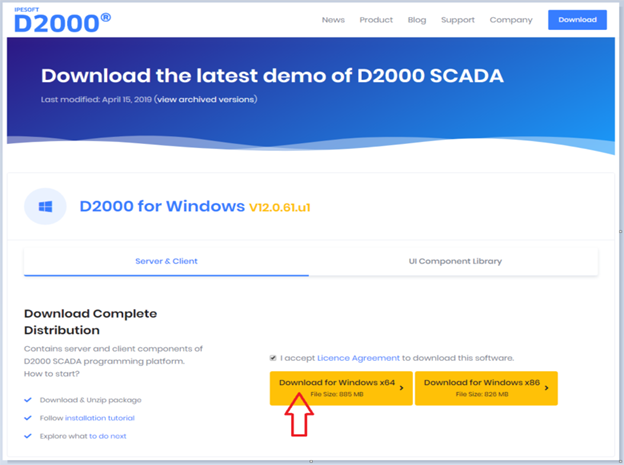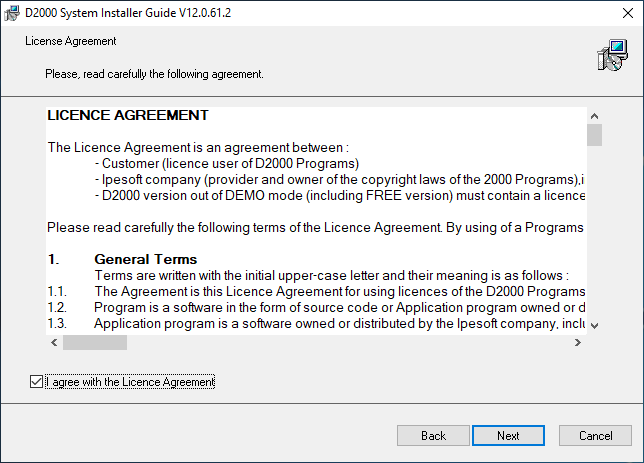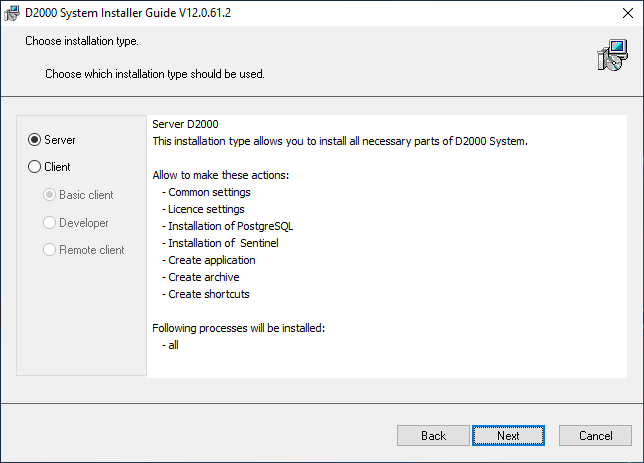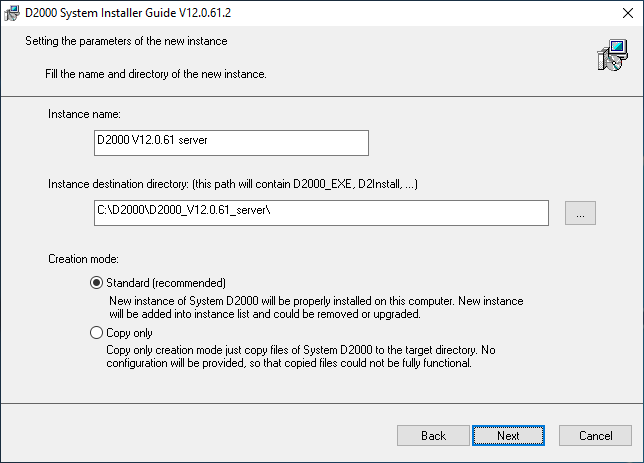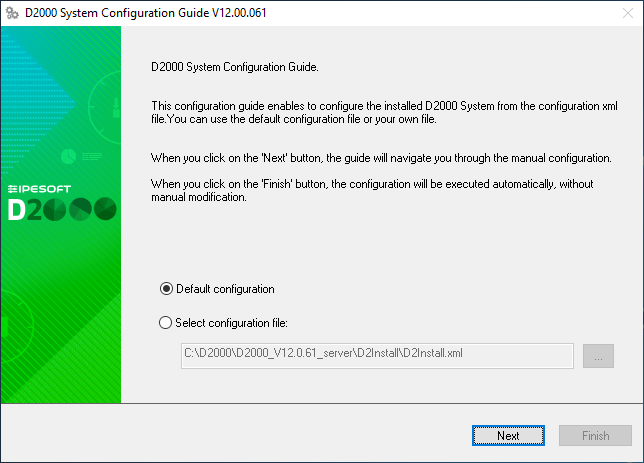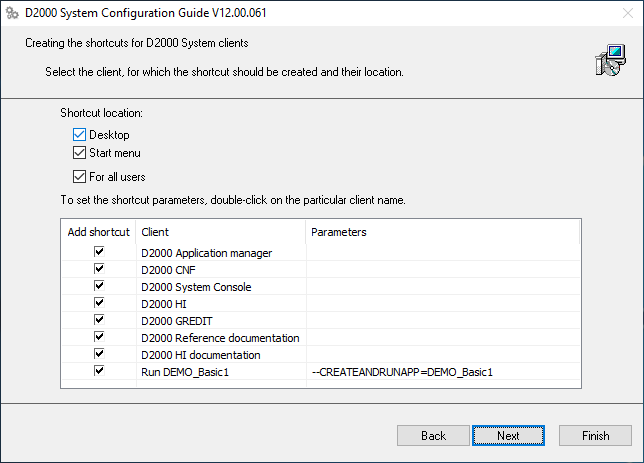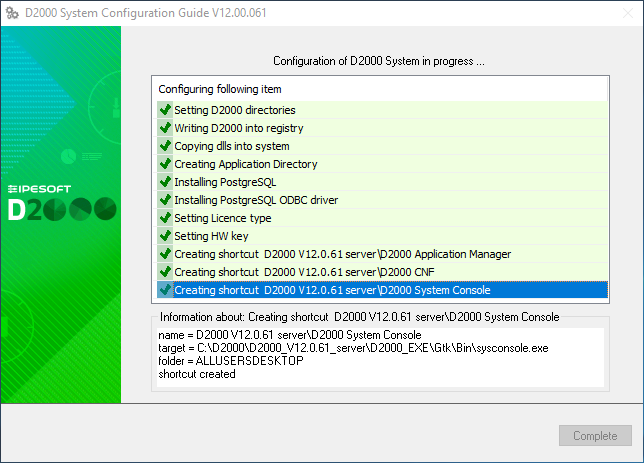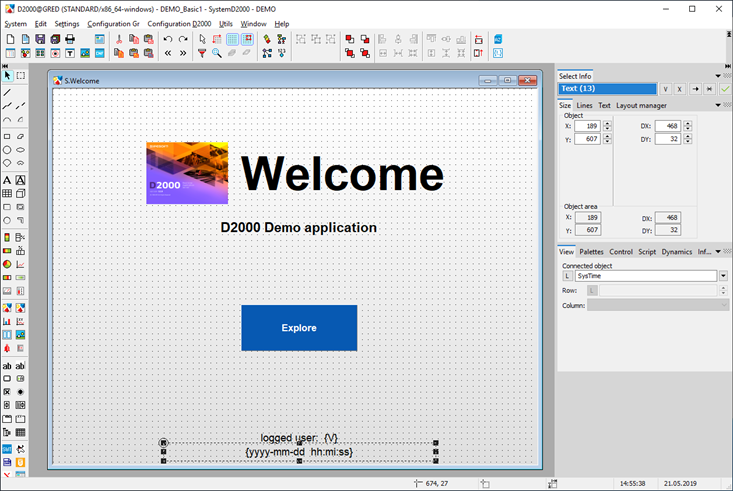...
| Info | ||
|---|---|---|
| ||
Before installing D2000, we recommend installing the latest patch of the supported version of the PostgreSQL database (https://www.postgresql.org/download/windows) as well as PostgreSQL ODBC (https://www.postgresql.org/ftp/odbc/releases) to avoid installing PostgreSQL when installing D2000, which may be out of date. The 64-bit version of D2000 requires 64-bit PostgreSQL ODBC. When planning the installation, we recommend studying the Performance requirements document - it contains information about resource requirements (RAM, CPU, disks), virtualization, and recommended settings for antiviruses. We recommend patching the D2000 after installation as well as regularly. |
Display the web page https://d2000.ipesoft.com/download in the web browser.
Accept the license agreement and download the 64-bit version of D2000.
Unpack the downloaded installation package.
Run the setup_ips.exe file to start the installation.
...
After starting the installation, a dialog box for choosing a language, in which the installation will run, will appear. Choose English.
The initial window of the installer guide will open next. It can be controlled by three buttons which enable us to move forwards and backwards in the dialog or to cancel the installation altogether.
Confirm the license agreement and click the Next button.
Choose the Server type installation and click the Next button.
Warning: If there are one or more instances of the D2000 system on the computer, there will be a window for instance administration preceding this one.
Set the name of the installed instance and the destination directory. Leave the parameter “Creation mode” set as Standard. The given instance name will be used in the Start menu after its installation.
| Info | ||
|---|---|---|
| ||
|
...
A display of summarizing information about the entered parameters is shown. After confirmation, the installation process will run and it could take some time.
Use the “Default configuration”.
If needed, change the following parameters (in most cases, they are pre-set correctly)
- IP mask – the Subnet Mask parameter
- Application – the directory for saving configuration of created applications
- Logging – the directory for storing log files
...
It is necessary to install the PostgreSQL database which is used for storing the configuration of applications. In the case of the Demo version, the support for HW keys, and the choice of the hardware key/software key is not essential.If PostgreSQL is already installed, this option is not available.
The dialog box shows the settings for the creation of the creating shortcuts for individual components. In most cases, the default setting is correct.
The choice “Run demo application” enables the creation and running of the demo application after the end of the installation. It is possible to save the set configured parameters of the installation. The last installation phase will run after clicking the button “Finish”.
The box informs about the current running configuration process. Information about the success or failure of this process is shown as well.
...
Now the instance of the D2000 system is installed, configured, and ready to be used. After clicking the "OK" button, the"Complete" button will be available, as shown on the previous slide. By clicking the button, the installation will be completed and the DEMO_Basic1 application will be created.
...
There are demonstrations and the usage of the basic types of graphic objects displayed in the DEMO application. In the section “Pictures”, there are two examples of practical usage of the graphic objects – a demonstration scheme that oversees controls the process of charging and discharging a battery and a technological scheme of a gas station is shown.
...
On the web browser's other tab, a welcoming scheme S.Welcome will be displayed in the thin client environment. It is the same scheme S.Welcome as is displayed in the D2000 HI window. The description of its functionality and usage is, therefore, the same.
Graphic editor – GR serves is used for creating visualization and completes editing the application configuration of the application. Currently, it offers a configuration of the initial scheme from the previous slide (S.Welcome). If it is changed and saved, the result will be visible in HI (if it is not visible in HI, there is a need to log out and log in again).
...
